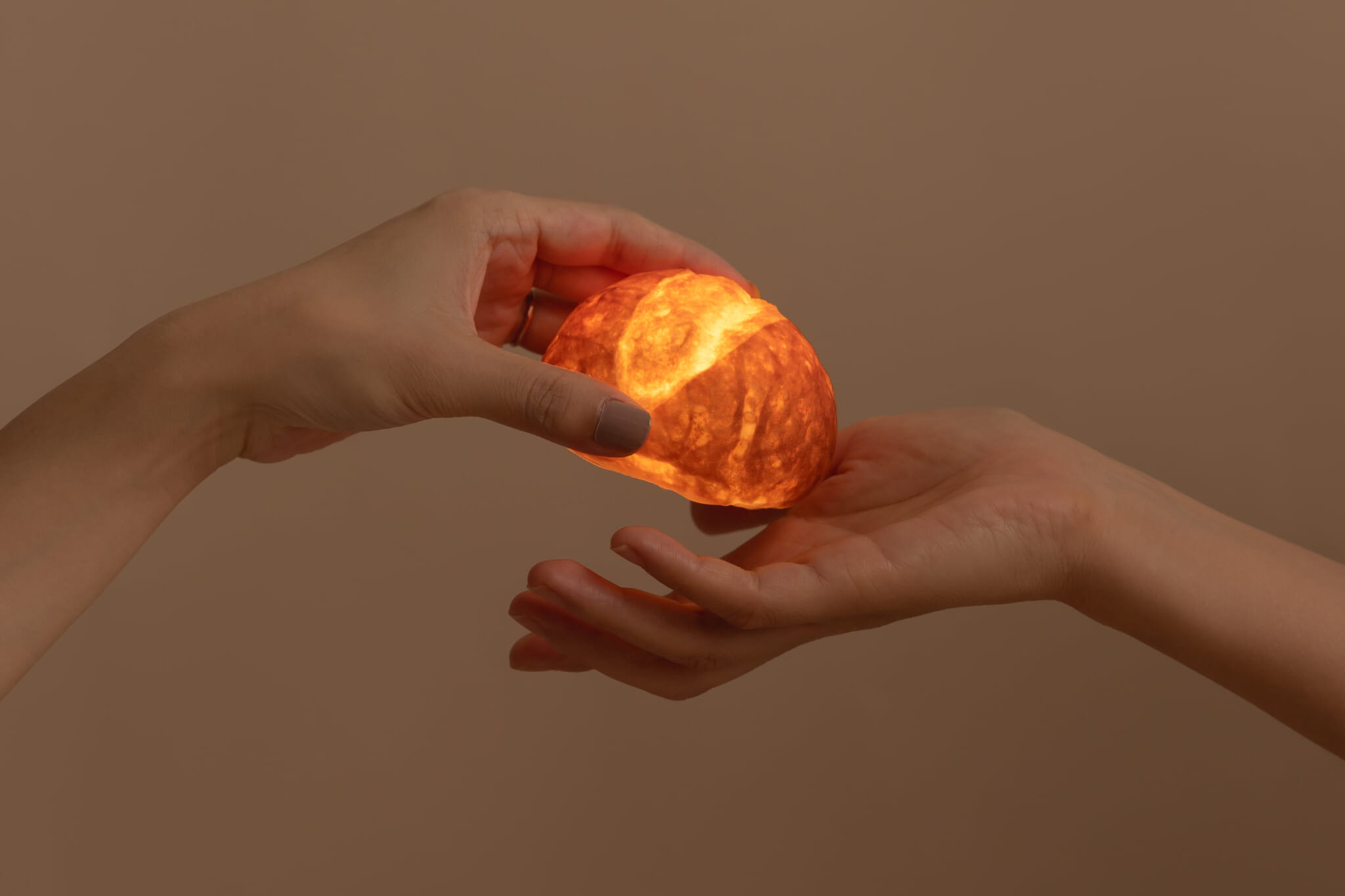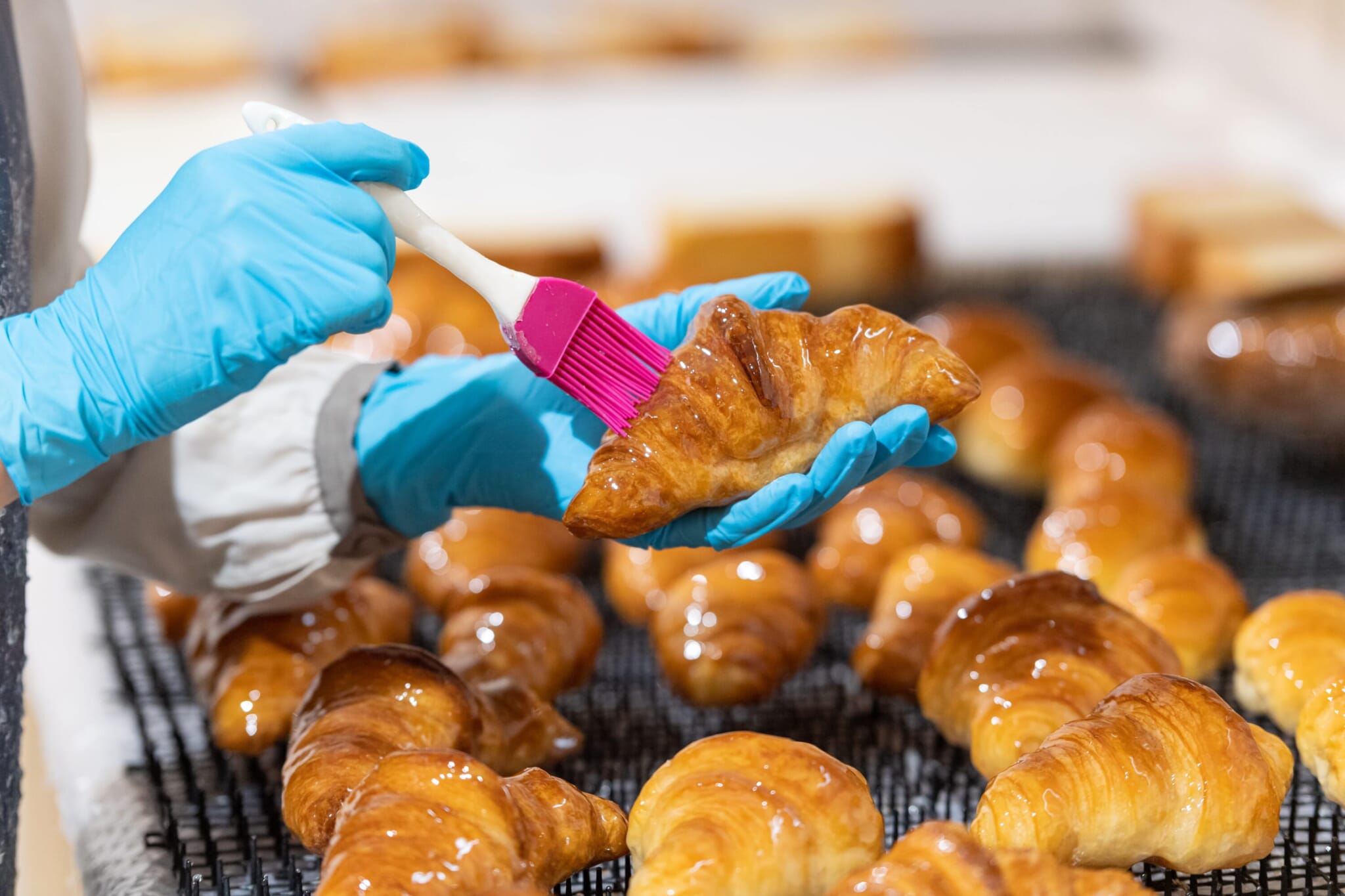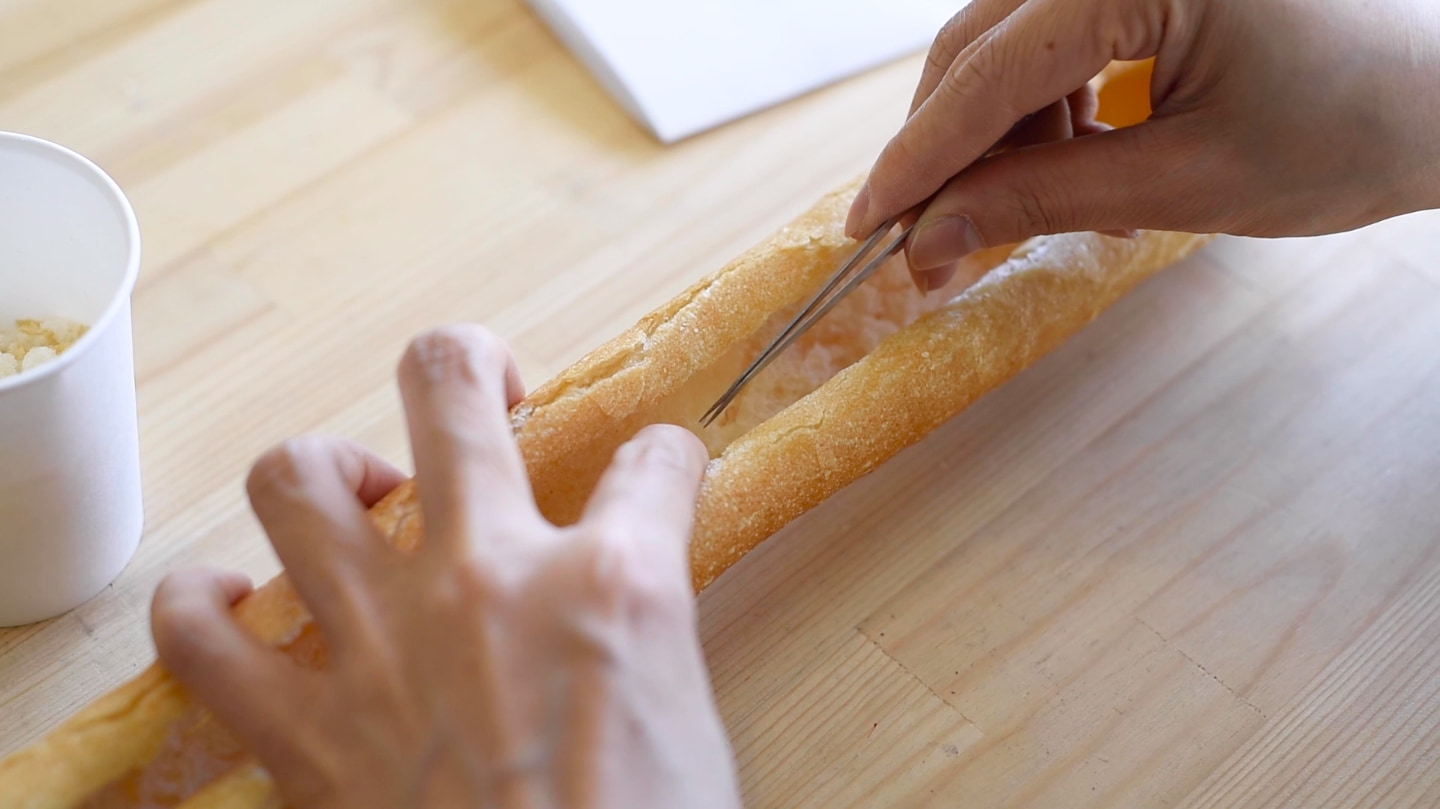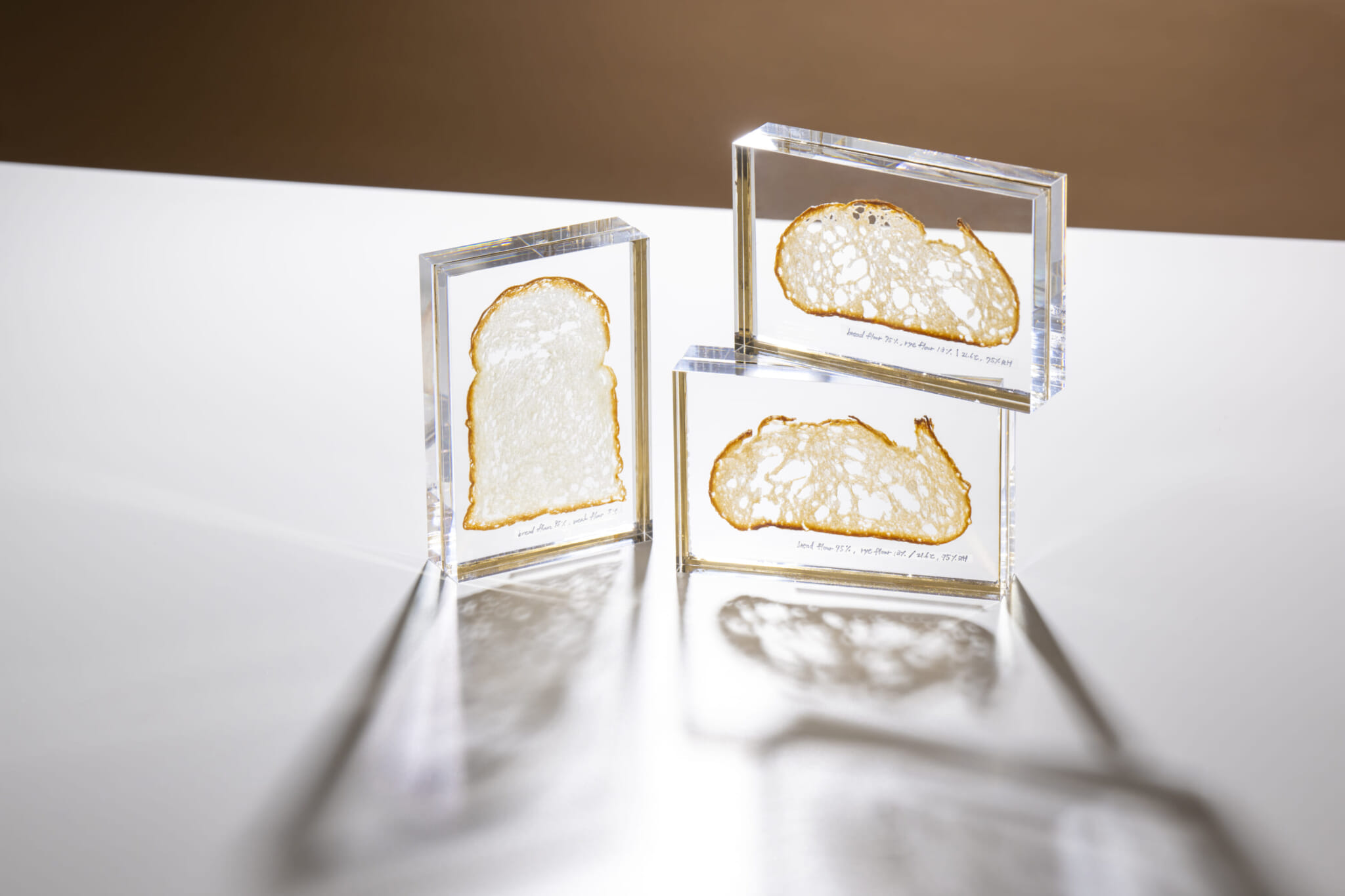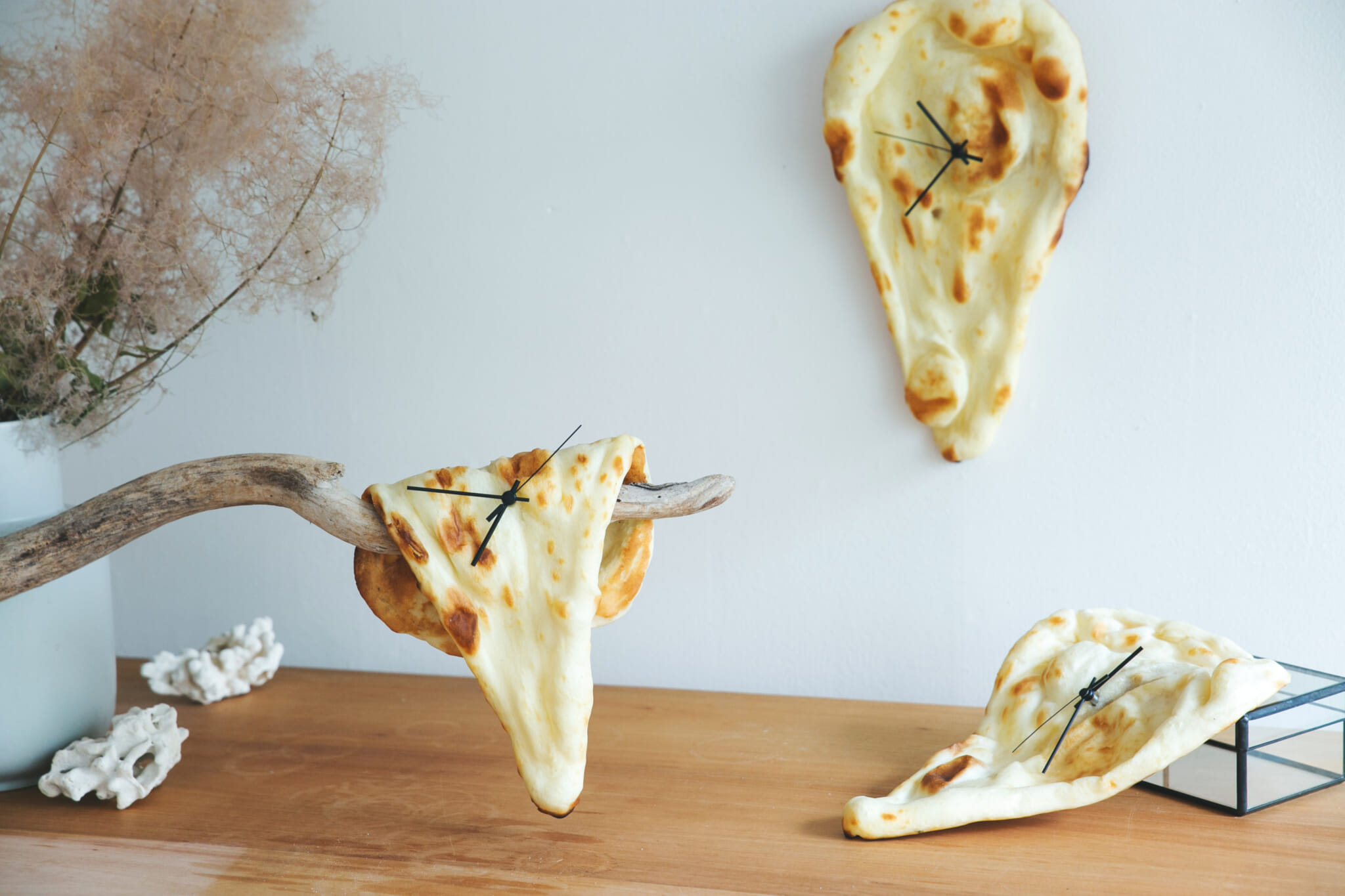Though bread was only introduced into the average Japanese person’s diet less than 200 years ago, it has weaseled its way into the hearts of many as a preferred breakfast, snack and even dessert. Over 10,000 bakeries across the country testify to its popularity — and some fans love bread so much that they want to spend their lives surrounded by it.
One such person is Yukiko Morita. She is the creative mind behind Pampshade, a company that combines gluten-ful treats and craftsmanship to produce whimsical home adornments. Sold online and at select interior design stores, Morita’s illuminated artisanal treats have caught the eye of home decorators worldwide. The secret to Morita’s unique works? They’re not ceramic or plastic: They’re made using real bread.

A Slow-burn Loaf
Born in Kobe, a city abounding with bakeries and sweet shops, Morita remembers always being surrounded by bread, often baking confectionaries at home. “But at that time, bread wasn’t special to me,” she says.
It was only when she worked part-time at a bakery as a university student that Morita understood how delicious, beautiful and profound bread could be.
Morita studied printmaking and shares that some of the art form’s qualities can also be applied to baked goods. “I discovered that bread has a certain printmaking quality. It has a ‘reproducibility’ in that it can be made the same way many times, and an ‘indirectness’ like clay, as the conditions vary depending on temperature, humidity and yeast,” she says. “I started to think that bread, too, could be considered art.”
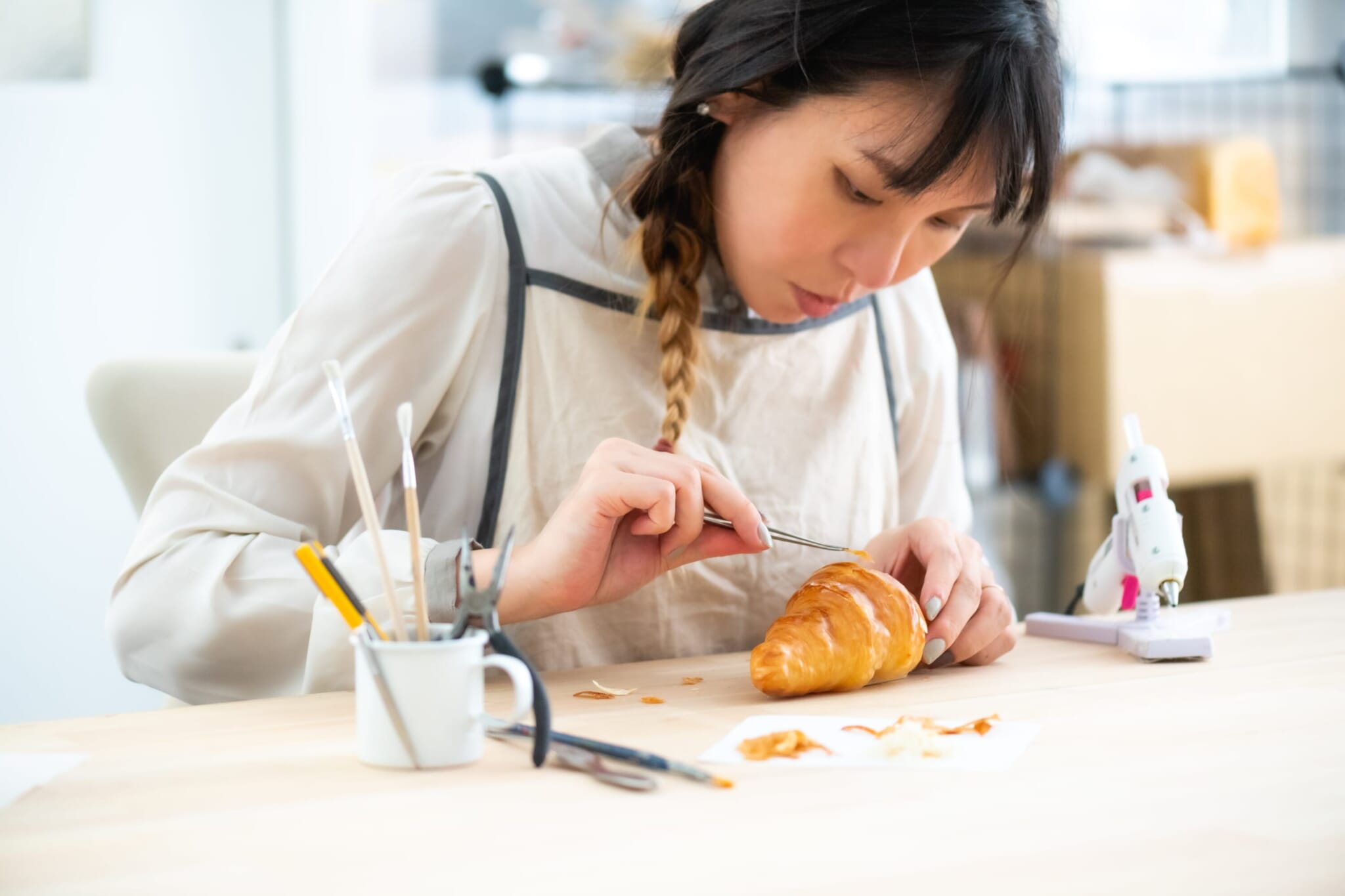
A Mighty Bun Has Risen
The idea for Pampshade came to Morita about 15 years ago, while she was still a student. At the end of her shifts at the bakery, Morita would be devastated to see unsold buns, baguettes and loaves thrown away. Without hesitation, she would take what she could home.
One day, she was inspired to try to preserve the bread, and the first Pampshade prototype was created. Morita has been making bread lamps and other items consistently ever since. “The concept and story of Pampshade has not changed,” she says, looking back at the last decade or so. “But with more orders coming in, our staff has grown and our production has increased.”
In a way, Pampshade is a conservation project that works to honor and preserve bread as long as possible. The fact that it doubles as an eclectic interior piece is a welcome bonus. Morita continues to work with local bakeries to acquire bread, purchasing unsold items at the highest price possible. This process comes with its own set of challenges: “We currently have more orders than bread we can buy. It’s hard for bakeries to know how much bread will be left at the end of the day,” she explains.
A Labor of Loaf
How is a Pampshade objet d’art made? Morita carefully deconstructs every piece, saving as much of the structure and texture of the bread as possible. She then covers every part — small and large — with resin, which prevents the bread from molding for up to three years. The final step is to add the electrical components and LED lights. The end product is a lovely accessory that will softly illuminate any corner of your home. Morita reveals one lamp takes from two to four weeks to complete, though she and her team produce many concurrently.
Morita’s passion for her designs is obvious, but her deep love for bread is most easily understood when she explains how she spends her free time. “On our days off, we bake bread for ourselves,” she says.
The Best Thing Since Sliced Bread
Pampshade’s lineup includes its best-selling croissant and bread roll lamps, as well as the Naaaan Time melting clock, inspired by Salvador Dalí’s “The Persistence of Memory.” Morita hopes to work with other bread types in the future, naming pretzels, bagels and canelés as dream projects. “Actually, we’ve experimented with these before,” she says. “But due to various problems with the preservation and shape, we didn’t feel comfortable presenting them.”
In addition to Pampshade’s signature bread lamps, Morita makes the Sliced series, which consists of decorative acrylic blocks, each containing a thin slice of bread. Especially in well-lit spaces, the cross-section reveals bubbles of various shapes and sizes. “From these bubbles, we can discover the bread’s path from flour to a small white mass, and then the yeast’s power to expand the bread little by little, until it is baked,” she explains, adding that the bubbles also create a lace-like effect.
Morita’s creations are too beautiful to eat but absolve you of the guilt of wasting a bite, in a dough-lightfully enchanting way.
To learn more about Pampshade visit Yukiko Morita’s website.

